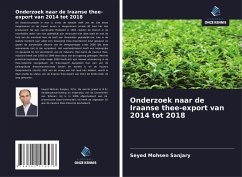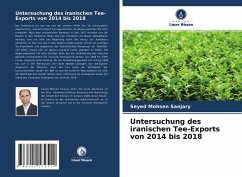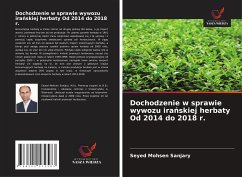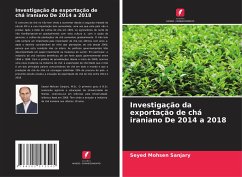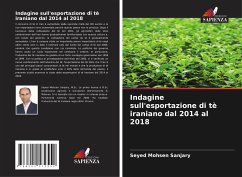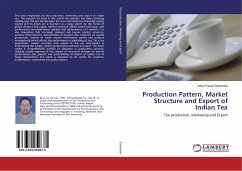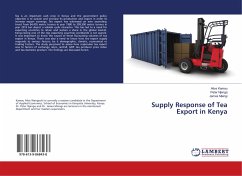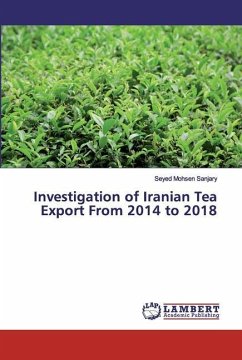
Investigation of Iranian Tea Export From 2014 to 2018
Versandkostenfrei!
Versandfertig in 6-10 Tagen
27,99 €
inkl. MwSt.

PAYBACK Punkte
14 °P sammeln!
Tea consumption in Iran has been increasing since the second half of the 19th century, and its import has increased as this country doesn't produce it. After successful tea cultivation in 1901, farmers in the northern parts of Iran gradually became familiar with this crop and with the help of the government, the cultivation of tea fields gradually increased. Iran has always been a major tea importing country for the last one hundred years, and given the considerable decline in the level of tea fields since 2000, it seems that this condition is not changed. Government policies have played a maj...
Tea consumption in Iran has been increasing since the second half of the 19th century, and its import has increased as this country doesn't produce it. After successful tea cultivation in 1901, farmers in the northern parts of Iran gradually became familiar with this crop and with the help of the government, the cultivation of tea fields gradually increased. Iran has always been a major tea importing country for the last one hundred years, and given the considerable decline in the level of tea fields since 2000, it seems that this condition is not changed. Government policies have played a major role in changing the industry. In particular, the Iranian tea industry enjoyed strong government support from 1958 to 1999. With the privatization policy since the beginning of 2000, a new change has occurred in the tea industry: tea export! Given that Iran is one of the major tea consuming countries around the world and Iran's tea production is only able to supply 20% of the country's demand, the present study examines the status of Iran's tea export from 2014 to 2018 and its causes and consequences are also investigated.



